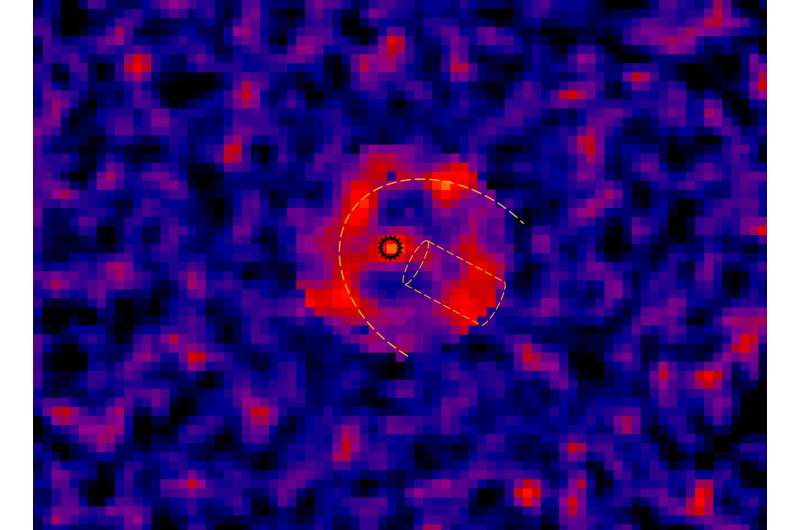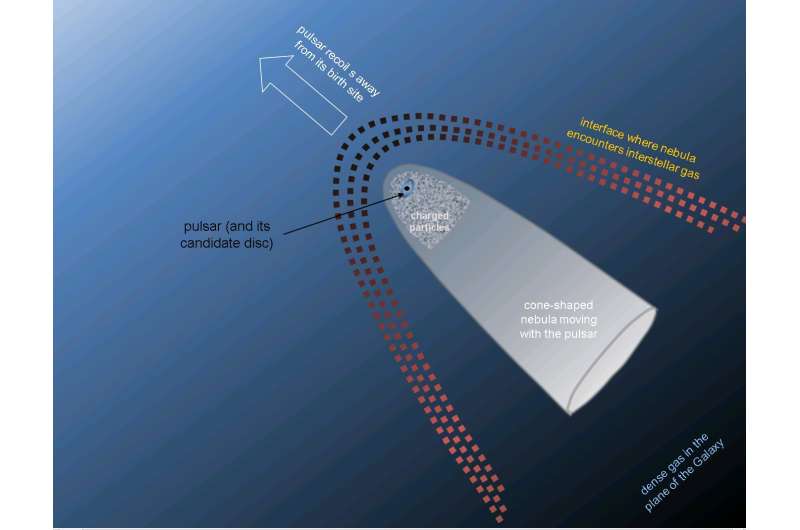Re-making planets after star-death

Astronomers Dr Jane Greaves, of the University of Cardiff, and Dr Wayne Holland, of the UK Astronomy Technology Centre in Edinburgh, may have found an answer to the 25-year-old mystery of how planets form in the aftermath of a supernova explosion. The two researchers will present their work on Thursday 6 July at the National Astronomy Meeting at the University of Hull, and in a paper in Monthly Notices of the Royal Astronomical Society.
The first planets outside the solar system were discovered 25 years ago - not around a normal star like our Sun, but instead orbiting a tiny, super-dense 'neutron star'. These remnants are left over after a supernova, the titanic explosion of a star many times more massive than our own.
Such 'planets in the dark' have turned out to be incredibly rare, and astronomers are puzzled over where they come from. The supernova explosion should destroy any pre-existing planets, and so the neutron star needs to capture more raw materials to form its new companions. These after-death planets can be detected because their gravitational pull alters the times of arrival of radio pulses from the neutron star, or 'pulsar', that otherwise pass us by extremely regularly.
Greaves and Holland believe they have found a way for this to happen. Greaves explains: "We started looking for the raw materials soon after the pulsar planets were announced. We had one target, the Geminga pulsar located 800 light years away in the constellation of Gemini. Astronomers thought they'd found a planet there in 1997, but later discounted it because of glitches in the timing. So it was much later when I went through our sparse data and tried to make an image."
The two scientists observed Geminga using the James Clerk Maxwell Telescope (JCMT), which operates at submillimetre wavelengths, sited on Hawaii. The light the astronomers detected has a wavelength of about half a millimetre, is invisible to the human eye, and struggles to get through the Earth's atmosphere.

Holland, part of the group that built the JCMT camera the team used - called 'SCUBA' - notes: "What we saw was very faint. To be sure, we went back to it in 2013 with the new camera our Edinburgh-based team had built, SCUBA-2, which we also put on JCMT. Combining the two sets of data helped to ensure we weren't just seeing some faint artefacts."
Both images showed a signal towards the pulsar, plus an arc around it. Greaves adds: "This seems to be like a bow-wave - Geminga is moving incredibly fast through our Galaxy, much faster than the speed of sound in interstellar gas. We think material gets caught up in the bow-wave, and then some solid particles drift in towards the pulsar."
Her calculations suggest that this trapped interstellar 'grit' adds up to at least a few times the mass of the Earth. So the raw materials could be enough to make future planets.
Greaves cautions that more data is still needed to tackle this quarter of a century old puzzle: "Our image is quite fuzzy, so we've applied for time on the international Atacama Large Millimetre Array - ALMA - to get more detail. We're certainly hoping to see this space-grit orbiting nicely around the pulsar, rather than some distant blob of Galactic background!"
If ALMA data confirm their new model for Geminga, the team hope to explore some similar pulsar systems, and contribute to testing ideas of planet formation by seeing it happen in exotic environments. This will add weight to the idea that planet birth is commonplace in the universe.
More information: J. S. Greaves et al, The Geminga pulsar wind nebula in the mid-infrared and submillimetre, Monthly Notices of the Royal Astronomical Society: Letters (2017). DOI: 10.1093/mnrasl/slx098
Provided by Royal Astronomical Society





















